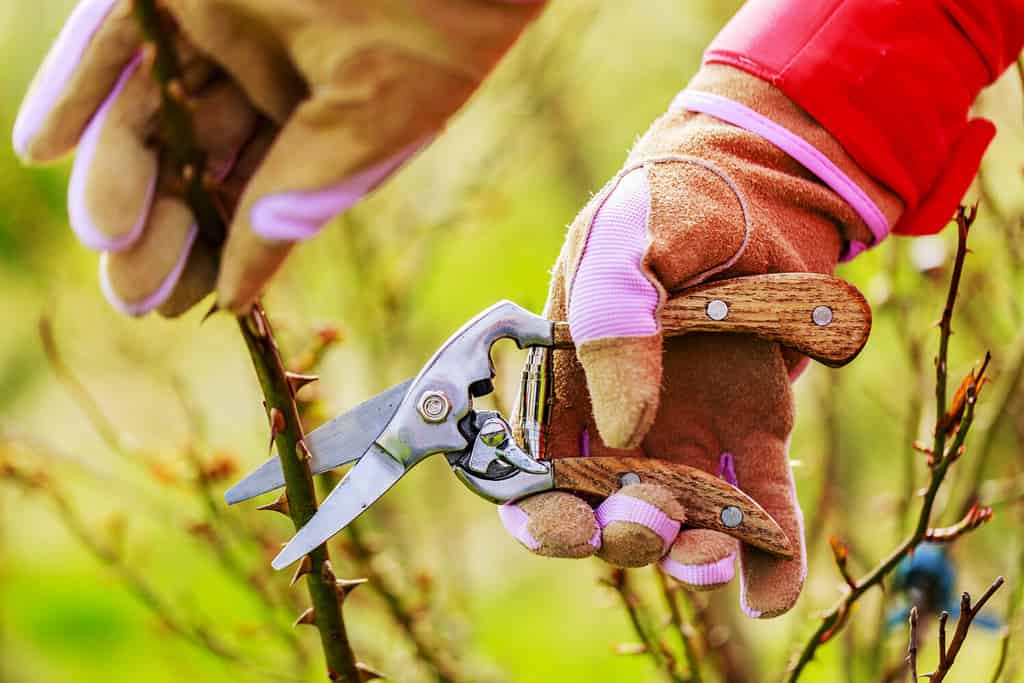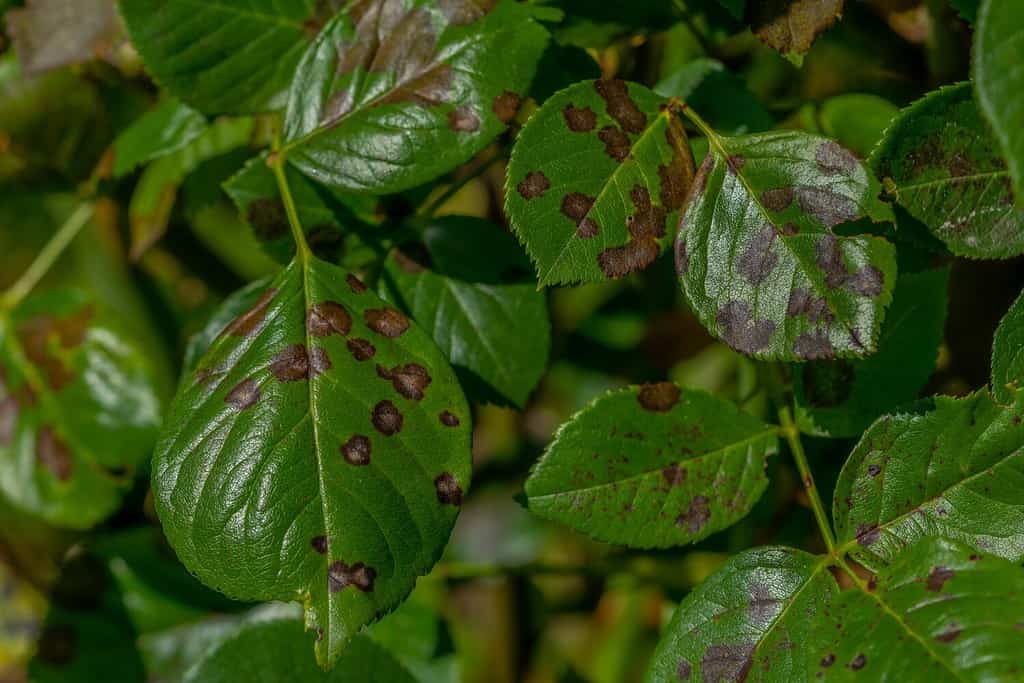As the scorching summer sun blazes down on the garden, a thorny proposition arises amidst the fragrant blooms: Should the roses be pruned? While one may associate this delicate task with the tranquility of spring, summer pruning unveils a whole new dimension, demanding both caution and precision. Like a harmonious dance with nature, we embrace the challenge of taming these exquisite yet prickly beauties, as we navigate through their abundant foliage and thorny stems. So, grab your pruning shears and gardening gloves as we learn how to prune roses in summer.
What is a Rose?
A rose is a flowering shrub or vine belonging to the genus Rosa. The genus encompasses hundreds of species and thousands of cultivars. Roses are renowned for their exquisite beauty and captivating fragrances. Characteristic features of roses include their thorny stems, pinnate leaves (with multiple leaflets), and showy flowers. Roses come in a wide range of colors. These include shades of red, pink, white, yellow, and orange, with some varieties displaying bi-color or multi-color blooms. They range from petite to extra-large, with numerous petals arranged in a symmetric pattern. Roses have inspired poets, artists, and gardeners throughout history. Roses are often associated with love, romance, and elegance. In addition to their ornamental value, some rose species produce edible fruits called rose hips. Rose hips are rich in vitamin C.

Roses come in a wide range of colors. These include shades of red, pink, white, yellow, and orange, with some varieties displaying bi-color or multi-color blooms. (Pictured: Chicago Peace rose)
©JHVEPhoto/Shutterstock.com
How To Prune Roses In Summer: Annual Pruning
In many regions, late winter or early spring (before new growth emerges) is considered the ideal time for pruning roses. This is after the threat of frost has passed, but before the rose bushes break their dormancy. Pruning during this period allows the roses to benefit from the upcoming growing season by encouraging healthy growth and abundant blooms. However, some roses, particularly those that only bloom once in a season (such as certain old-fashioned varieties or climbers), may require pruning immediately after their main flowering period. This is usually in late spring or early summer. By pruning after their blooms fade, you can shape the rose bush, remove spent flowers, and encourage new growth for the following year.

Spring pruning allows the roses to benefit from the upcoming growing season by encouraging healthy growth and abundant blooms.
©gorillaimages/Shutterstock.com
How To Prune Roses In Summer: Summer Pruning
During the summer months, pruning beyond deadheading may be beneficial for your rose bushes. Summer pruning is generally less extensive compared to the major pruning done in late winter or early spring. Deadheading, which involves removing spent flowers, should be practiced regularly throughout the summer. Deadheading encourages continuous blooming and maintains the overall appearance of your roses.
Apart from deadheading, you should remove diseased or damaged canes. It’s important to prune diseased and damaged branches promptly to prevent the spread of disease and encourage healthy growth. As rose bushes continue to grow vigorously during the summer, they may become dense with foliage. Thinning out crowded areas by selectively removing some branches or canes can improve air circulation and reduce the risk of disease.
If your rose bushes are getting too large or unruly, you can selectively prune back longer canes to control their growth and shape them according to your desired form. However, avoid heavy pruning during this time, as it can disrupt the overall health and blooming potential of the plant. Summer pruning should be approached with caution, as excessive or incorrect pruning can diminish the plant’s energy reserves and affect its ability to produce blooms. Always use sharp, clean pruning tools and make clean cuts just above a bud or leaf node.

Deadheading, which involves removing spent flowers, should be regularly practiced throughout the summer to encourage continuous blooming and maintain the overall appearance of your roses.
©OlgaPonomarenko/Shutterstock.com
How To Prune Roses In Summer: Sterile Pruners
Using sterile pruning shears when pruning roses is essential for maintaining the health and vitality of the plants. Pruning promotes better airflow, stimulates new growth, removes dead or diseased wood, and shapes the plant for aesthetic appeal. However, with pruning, there is a risk of spreading diseases or infections from one plant to another if the tools used are not properly sterilized. Roses are susceptible to various diseases, such as black spot, powdery mildew, and cankers. When pruning infected plants, the pathogens can easily transfer to the pruning shears and remain on the blades. If the same shears are used on healthy plants without sterilization, the pathogens can spread, leading to the infection of previously healthy roses.
Pruning wounds the plant. Using sterile pruning shears minimizes the introduction of additional microorganisms that can hinder the healing process or cause secondary infections. By using sterile tools, you help maintain the overall health of the plant, allowing it to focus its energy on growth and flower production rather than fighting off diseases.

Roses are susceptible to various diseases, such as black spot (pictured), powdery mildew, and cankers.
©foto_molka/Shutterstock.com
Sterilizing Pruning Shears
One of the simplest methods of sterilization is to wipe the blades with rubbing alcohol or vinegar. Dip a clean cloth or cotton pad into the alcohol or vinegar and thoroughly wipe the blades, making sure to cover the entire cutting surface. This will kill most pathogens present on the shears.
By mixing one part bleach with nine parts water, you can create a sterilizing solution. Submerge the blades of the pruning shears in this solution for 5-10 minutes. Afterward, rinse the shears with clean water and dry them thoroughly. Flame sterilization involves using an open flame to sterilize the pruning shears. Hold the blades of the shears over the flame, such as from a propane torch or gas stove, for a few seconds. The heat will kill any pathogens present. Boiling water can also effectively sterilize pruning shears. Submerge the shears in a pot of boiling water for a few minutes. Ensure that the boiling water covers the blades entirely. Afterward, remove the shears, dry them thoroughly, and apply a light coat of oil to prevent rust. While each of these methods is a bit time-consuming, using sterile pruners is worth the extra time. Roses are finicky plants.
Thank you for reading! Have some feedback for us? Contact the AZ Animals editorial team.








